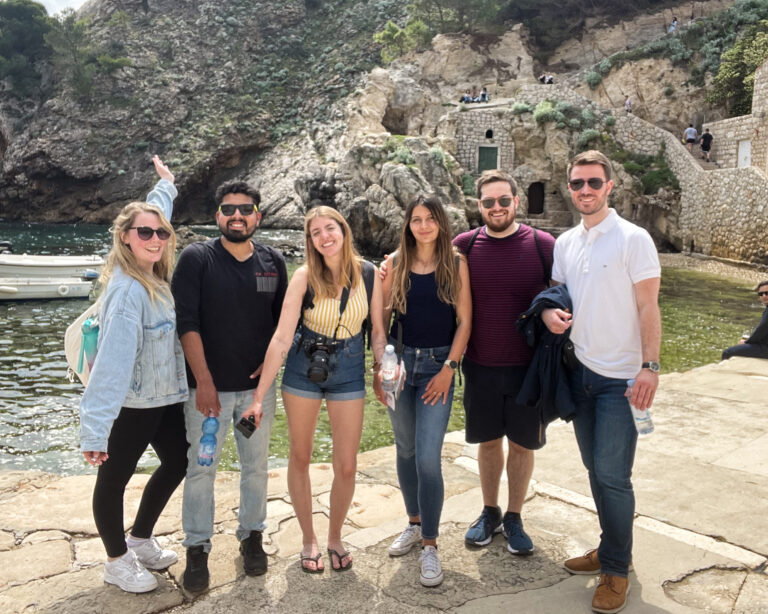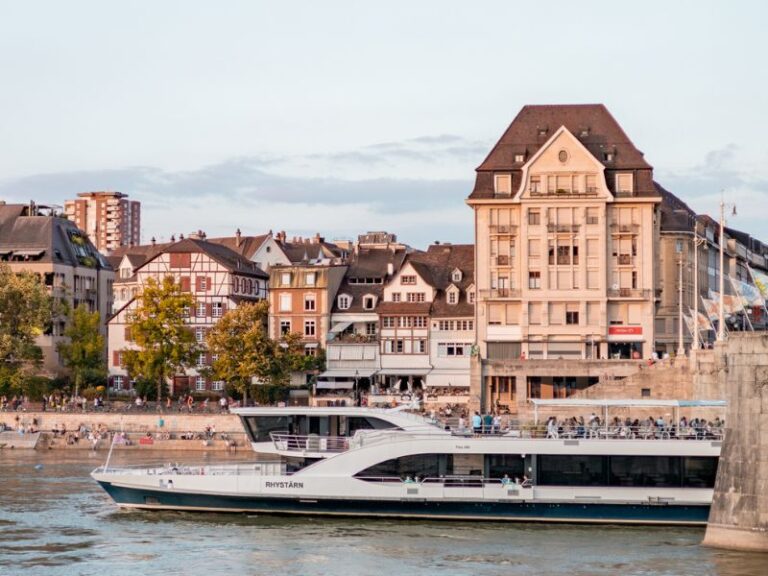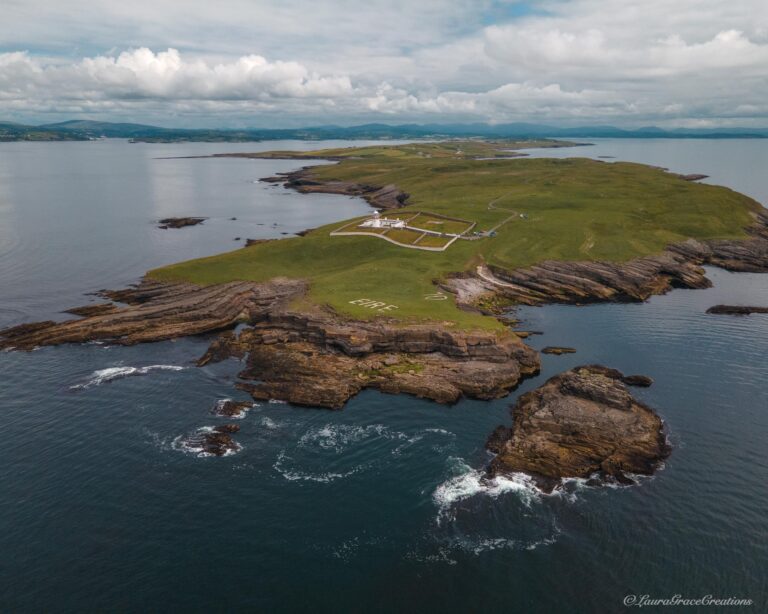How much does Backpacking Europe Cost? (My actually spending breakdown)
Live Adventure Travel contains affiliate links and is a member of the Amazon Services LLC Associates Program. If you make a purchase using one of these Amazon links, I may receive compensation at no extra cost to you. See my Disclosure Policy for more information.
In the summer of 2022, I ventured on a 4-month backpacking trip across Europe. I made it my mission to keep track of my spending so I could report back to you just how much backpacking in Europe ACTUALLY costs. You see, there are A LOT of guides online estimating ‘the perfect budget’ but the problem is many of them are using figures from pre-2019. AND…well…we all know the years leading up to 22′ haven’t been exactly normal. We have since seen a drastic rise in prices of fuel, accommodation, and everyday living expenses. Now, the good news is, it is still possible to backpack Europe on a Budget but it is also important to be realistic about that budget. That is why I am going to break down step by step just how much I spent on each ‘category’ as well as giving an estimated budget for those who want to spend a little less, and those who want to spend a little more. I will be spilling the beans on the real Backpacking Europe Cost!
Important Note…
There are a few expenses that I did not include in my overall cost breakdown due the price being dependent on your country of residence. So, below are some additional things you should consider when budgeting for a Interrail trip.
📞 Staying connected with friends and family….I’m from Ireland so luckily my normal phone bill worked in all of the countries I visited. However, when I am not travelling within the EU I always use Airalo, a eSim company that offers affordable data plans in 200+ countries. They also have a Europe plan that covers over 39 European countries. Perfect for Backpacking.
🏨 Avoid hospitals bills while abroad…It is beyond me why someone would go away without making sure they have travel insurance first. As someone who has personally been injured abroad, I can not stress this enough, but travel insurance is a VITAL part of your Backpacking Europe Packing List! I recommend Safety Wing for high rated, yet affordable cover.
🛫 Get the best flight deals…I also didn’t include flights in the cost breakdown, cause, well that really depends on where you are travelling from. I recommend using Skyscanner to check when the most affordable date are.
What kind of backpacker are you?
Now, before we dive deep into the budget, it is important to determine what kind of backpacker you are because it is pointless for me to tell you how much I spent when in reality, we have completely different spending habits. I have made a little table down below explaining the different types of backpacking styles, a shoestring backpacker, a mid-budget backpacker and a high-budget backpacker. I suggest you read the table and see which one suits you the most.
I personally fall into the mid-budget backpacker, I will travel on a budget when it comes to accommodation, food and transport with the occasional splurge, however, I am very experience led, in other words, if there is something I really want to do, whether that is parasailing, white water rafting or a guided tour I won’t let money get in the way. Later in the post, I will divide my spending into 6 different categories, accommodation, food, transport, alcohol and others. For each category, I will give examples of how I spent my money to help you calculate if you a likely to spend more or less. Yes, I could give you the final figure and call it a day, but the reality is everyone’s final figure is going to be different depending on their spending habits.
| Type of Spend | Shoestring Backpacker | Mid-Budget Backpacker | High-Budget Backpacker |
|---|---|---|---|
| Accommodation | Largest Dorms (10-21+ beds) | Mid Size Dorms (4 – 10 beds) | Private Rooms |
| Transport | Mostly Walk | Walk, Bus, Tram | Walk, Bus, Tram, Uber |
| Activities | FREE Walking Tours | FREE Walking Tours, Some paid activities | FREE Walking Tours, & paid activities |
| Food | Cook all of your own meals | Cook most of your own meals, occasionally eat fast food, food trucks & restaurants | Eats in restaurants most nights |
| Average Daily Budget | €40-€55 | €55-€80 | €150+ |
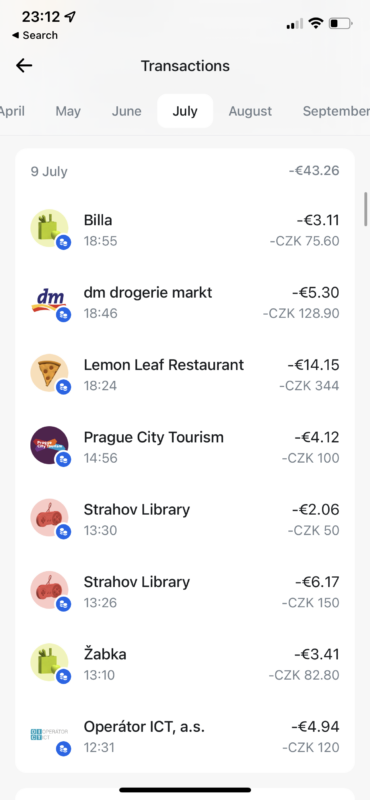
The PERFECT banking card to keep on track with your backpacking Europe budget!
One more thing I want to mention before breaking down the cost of backpacking Europe is banking cards.
Of course, you can go the old fashion route of keeping track of your spending on a spreadsheet every night, but… let’s be honest…that is incredibly time-consuming. And odds are you will lose track of your budget!
I personally, would have been lost without my Revolut pay-as-you-go card. I used it for literally every purchase and it never let me down.
Basically, you add money onto the card as you need and can pay by using your phone or a Revolut debit card. I used to add €500 every Thursday onto my card and that would be my spending money for the week. It felt so good some weeks when I was under.
Revolut is currently running an offer for a FREE card and an additional €10 once you make your first purchase. So, it’s a win-win really. If you are in the market for a Travel banking card then I recommend getting your Revolut card today.
I have highlighted down below some of Revolut’s travel-friendly features.
One of the nicest features of the Revolut mobile app is the budget tracker. Revolut tells you how much you spend each day. I have attached a screenshot above as an example, on the 9th of July, I spent €43.26. The app notifies you each time you make a purchase with your total spent so far that day. Of course, you can turn it off, but I liked it on as it kept me aware of my spending. It also allows you to set a monthly or weekly budget. When you are set to go over that budget the app notifies you! Therefore, you can track your spending while travelling without having to physically think about it.
Another travel-friendly feature of the app is the categories. When you pay for something Revolut automatically stores that payment under a suitable category. Therefore, you can keep track of how much you are spending on accommodation, transport, food etc..
Finally, I want to talk about Revolut’s currency features, it is easy to exchange currencies back and forth through the app. If you are in a country with a currency different to your own, Revolut automatically exchanges your purchase into your home currency. Making it much easier to keep track of what you are spending in a currency you might not otherwise understand. An example of this can also be seen in the screenshot above, I was in the Czech Republic on the 9th of July and all my spending has been converted back into Euro. It’s a super handy feature.
If you are in the market for a travel-friendly banking app I’d highly recommend Revolut. And with my link, you can order a FREE card straight to your home + avail of the extra €10 offer.
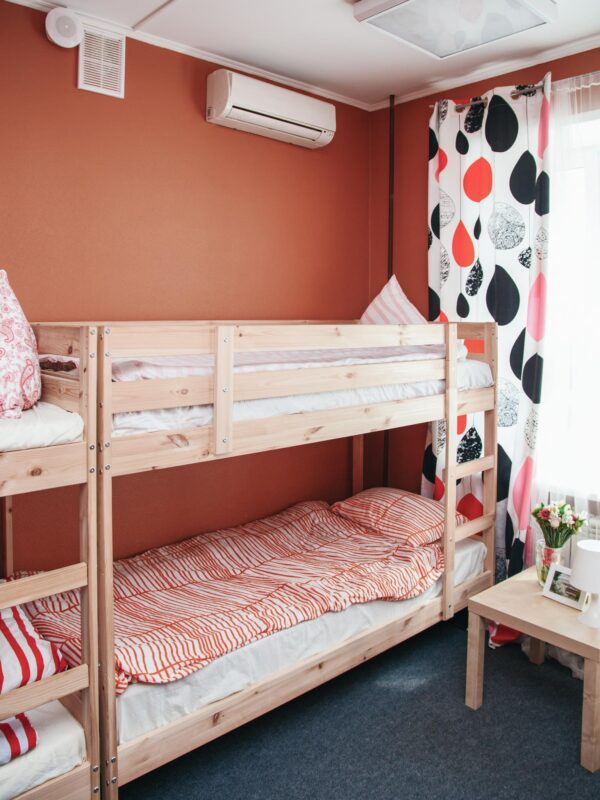
Backpacking Europe Cost Breakdown: Accommodation
The first category I am going to break down is accommodation.
Now, it is important to take into consideration what part of Europe you will be travelling through. In peak season, nightly prices in hostels can vary greatly depending on which country you are travelling to.
Below is a breakdown of the average nightly cost of each country I visited. If you are looking for my honest opinion of each hostel I stayed in then check out this post.
Generally, I stayed in 6-10 bed dorms with the exception of a week’s stay in a private room in Krakow Poland.
The table down below shows a big range of the average nightly cost depending on the destination.
| Country | Average Nightly Spend | Month |
|---|---|---|
| Croatia | €19 a night | May |
| Italy | €36 a night | June |
| Poland | €9 a night (dorm), €36 a night (Private) | July |
| Czechia | €28.60 a night | July |
| Hungary | €21 a night | July |
| Slovenia | €34.75 a night | July |
| Austria | €42.80 a night | July/August |
| Germany | €26.30 a night | August |
| Switzerland | €50.85 a night | August |
| France | €30.30 a night | August |
| Total Nights | Total Spend | Average Nightly Spend |
| 114 | €3,388 | €30 a night |
Backpacking Europe Cost Video Guide
Before we continue, I wanted to mention that I do have an intensive video guide version of this blog post. So, if you prefer to watch rather than read this is the guide for you!
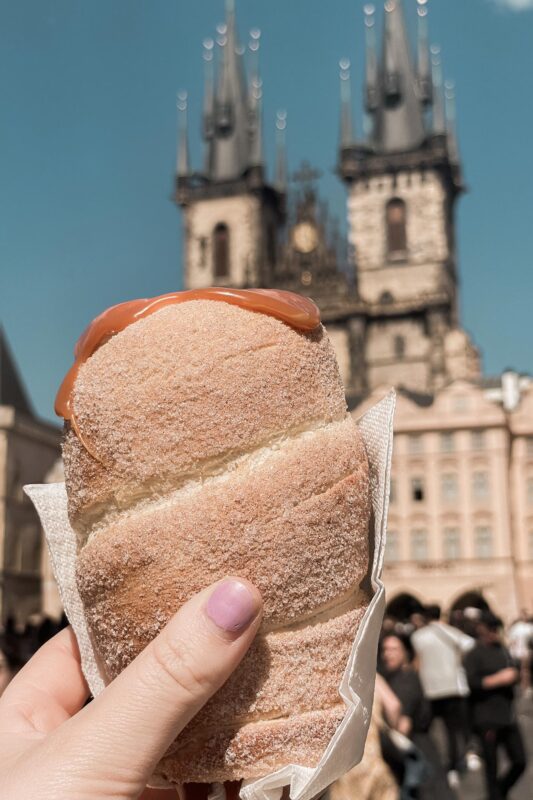
Backpacking through Europe Cost Breakdown: Food
The next spending category I want to highlight is food. While I was away I made the majority of my food in my hostels with the occasional splurge on fast food, street food and restaurant meals.
Again, the cost of food varies greatly depending on what country you are visiting. However, it is possible to keep costs down by making your own meals.
I purchased this collapsable lunch box on amazon and it proved to be very useful throughout my trip. If I was staying somewhere for longer than 3 days I would make up a big dinner the first night, then store the leftovers in the fridge for the remaining days.
I would usually do a breakfast and dinner shop for 3/4 days which would range from €25 to €35 euros. Which meant I could be spending as little €8 per day on food.
Now, that is not to say I do not recommend splashing out from time to time, it’s nice to try some of the local foods too. Whether that is eating in a boulangerie in Paris, or taking a food tour in Munich.
| Country | Average Daily Food Cost | Eating Habits |
|---|---|---|
| Croatia | €13.3 | My own meals & Street Food |
| Italy | €21 | My own meals, Street Food, restaurants |
| Poland | €11 | My own meals & Street Food |
| Czechia | €13 | Streetfood & Resturant |
| Hungary | €15.80 | My own meals, Streetfood & Restaurant |
| Slovenia | €22.9 | My own meals, Streetfood & Restaurant |
| Austria | €21.30 | My own food (It was more expensive than expected) |
| Germany | €10 | My own food |
| Switzerland | €17.80 | My own food (Literally lived on pasta, tomato sauce and bread 😂) |
| France | €32.50 | My own meals, Streetfood & Restaurant (Had no kitchen in Paris) |
| Total Days | Food Total Spend | Food Daily Average |
| 114 | €2,044.36 | €17 a day |
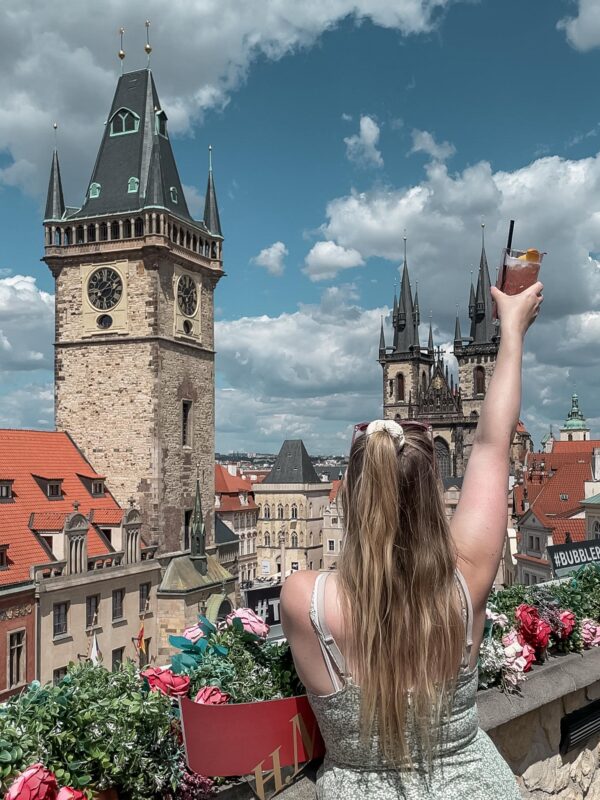
Backpacking Europe Costs: Drink/Alcohol
Another thing to consider while researching the cost of backpacking in Europe is Alcoholic Beverages.
Drinking is a common way to socialize and make friends in hostels, where you’ll likely be staying on your trip. Whether it’s grabbing a beer at the hostel bar or going out with fellow travellers, alcohol is a big part of the social scene.
It can also be tempting to buy a drink while you’re out and about, trying new foods and exploring new cities.
But, trust me, those little purchases add up quickly and can take a big bite out of your budget. On my trip, I didn’t drink a ton of alcohol, so my budget for drinks was lower than the average traveller.
But you may notice, that Croatia is considerably higher than the rest of my trip. That is because it was my first stop and I got sucked into the ‘hostel lifestyle’. But once I added up how much the alcohol cost I quickly reevaluated my spending. Don’t get me wrong, I still took part in the nighttime ventures but I didn’t feel the need to drink every time.
However, I still made sure to set aside some funds specifically for drinks so I wouldn’t be caught off guard. It’s always better to be prepared and budgeting for drinks is a small but important part of the overall backpacking experience, especially if you want to fully immerse yourself in the social scene and make new friends along the way.
| Country | Total Alcohol Spend in Each Country |
|---|---|
| Croatia | €109.52 |
| Italy | €57.3 |
| Poland | €12.64 |
| Czechia | €11 |
| Hungary | €26.31 |
| Slovenia | €15 |
| Austria | €14.00 |
| Germany | 0 |
| Switzerland | €6.76 |
| France | 0 |
| Total Days | Alcohol Total Spend |
| 114 | €238.53 (avg: €2 a day) |
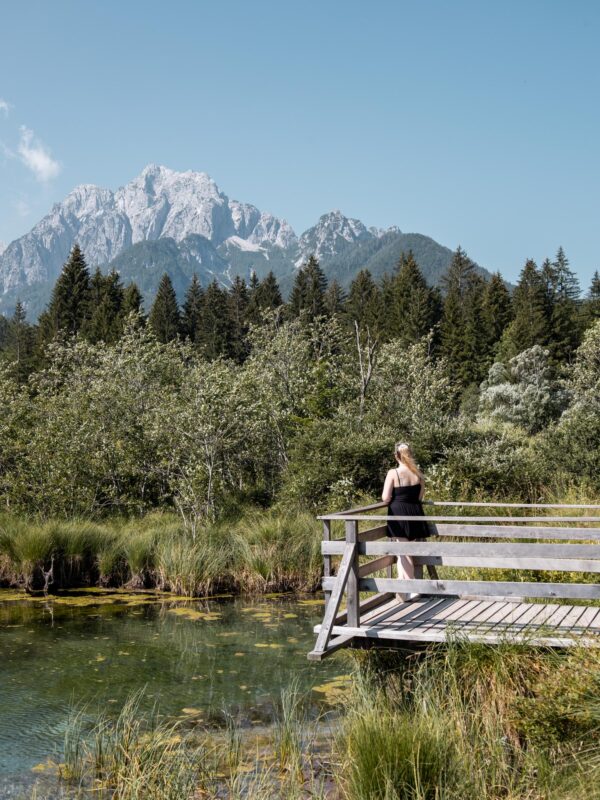
Cost to backpack Europe: Activities
However, if you are planning on taking part in day tours, visiting national parks, or booking into adventure activities, then I recommend putting some additional funds aside.
One of the more expensive elements of backpacking in Europe is activities and tourist attractions. Of course, there are plenty of things to do on a budget.
It means that you can try everything you want to do in a destination without feeling like you are spending too much money. The last thing you want is to regret not visiting places like the fairytale setting of the Neuschwanstein Castle in Germany or the taking part in the iconic Boat Tours in Budapest.
Personally, I am very satisfied with how much I spent on tours and activities. Yes, some things were expensive like day trips through the Julian Alps or Rafting in Croatia. But I have many amazing memories from these experiences.
Pro Tip for Backpacking Europe…
🚌 I highly recommend checking out both GetYourGuide or Viators when backpacking Europe. You may be surprised at the types of tours, activities and day trips you can take part in. Some of my favourite moments on my trip are from doing this.
| Country | Total Alcohol Spend in Each Country |
|---|---|
| Croatia | €221.06 |
| Italy | €266.23 |
| Poland | €55.29 |
| Czechia | €23.4 |
| Hungary | €10.12 |
| Slovenia | €149 |
| Austria | €89.4 |
| Germany | €5 |
| Switzerland | €49.65 |
| France | €169.2 |
| Total Days | Food Total Spend |
| 114 | €1038.35 (avg: €9 a day) |
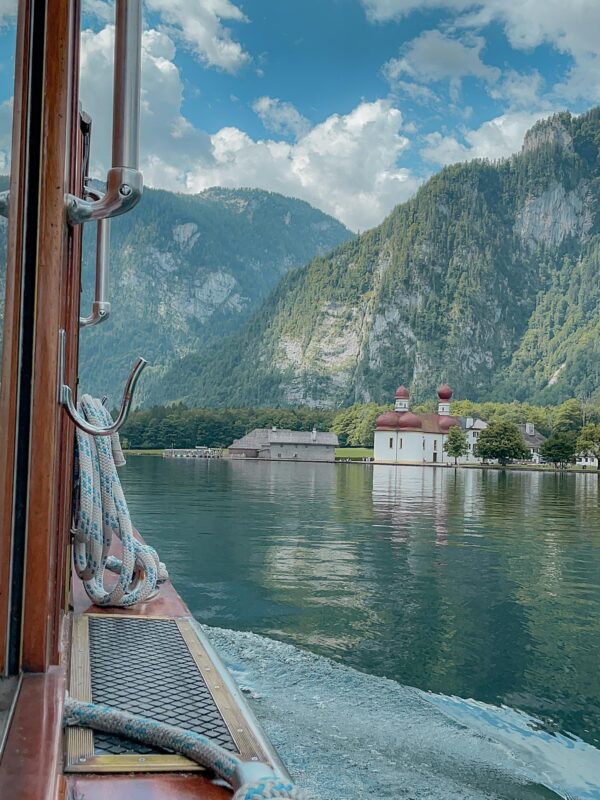
How much does it cost to backpack Europe: Transport
There are many convenient ways to travel across Europe, the main ones being train, bus and ferry. The continent is well connected and it is easy to get from A to B.
Many people will argue that using busses is the most budget-friendly option while backpacking Europe. And this may be true to some extent, I believe travelling by train is a much better option.
If you purchase a continuous interrail pass you can travel between most destinations without needing to pre-book your tickets. Meaning you’ll have full flexibility when you decide to move on from each stop. It also allows you to make use of the convenient night train services.
If you want to find out more about how the Interrail Pass works you can check out my Youtube video here.
It is also important to keep a bit of money for transport set aside, many European cities have great Uber services, like Rome, while others like Budapest only have traditional taxi services which will cost a fair bit more. In saying that walking and public transportation is a much cost affective way of getting around.
For my first month of travelling (Croatia), I made my way around by bus or ferry. I then activated my 3-month interrail pass for the remainder of my trip. Below is a breakdown of how much I spent on transport over the 4 months.
| Related Post: The Ultimate Travel Playlist |
| Country | Total Alcohol Spend in Each Country |
|---|---|
| Croatia | €114.06 |
| Italy | €328.60 |
| Poland | €103.71 |
| Czechia | €58.55 |
| Hungary | €39.62 |
| Slovenia | €69.58 |
| Austria | €133.10 |
| Germany | €19.8 |
| Switzerland | €64.40 |
| France | €88.20 |
| Total Days | Food Total Spend |
| 114 | €927.22 (avg: €8 a day) |
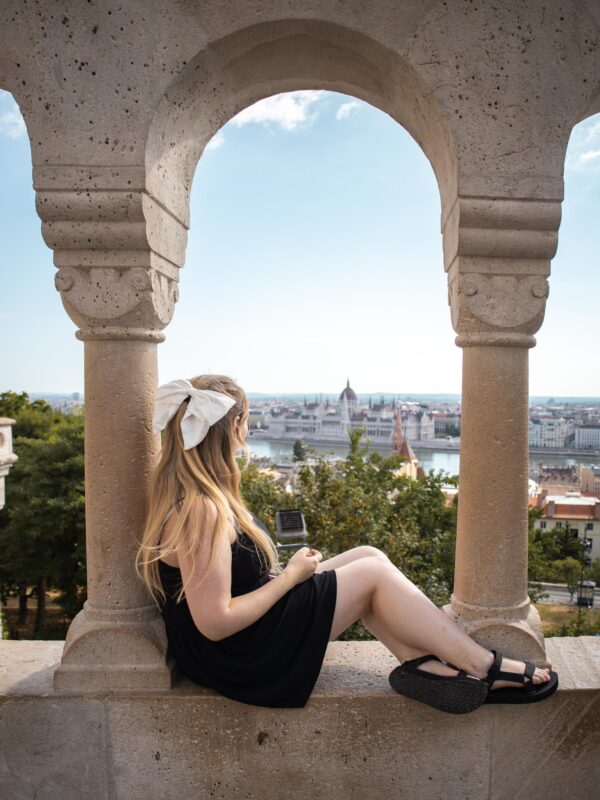
Backpack Europe Budget: Other Expenses
The next category covers all other expenses, these are the little things that you need to buy throughout your trip that you never really thought of adding to your predicted budget.
For example, washing your clothing tends, this price vary’s from place to place with it costing around €8 in places more eastern/central cities like Split and Budapest. And €10/12 Europe in more northern countries like Italy.
Trips to the pharmacy really add up, especially if you are away for a long period of time. Hygiene products like shampoo, tooth paste and deodorant.
Cash withdrawals where you can’t quite remember what you spent the money on 🤣
And clothing, I DID NOT pack right for my trip and ended up spending a lot more money on clothes than I wish to admit. I did not account for this in my original budget.
| Country | Total of ‘Other’ Expenses |
|---|---|
| Croatia | €75.82 |
| Italy | €134.16 |
| Poland | €120.93 |
| Czechia | €10.20 |
| Hungary | €0 |
| Slovenia | €148 |
| Austria | €210.58 |
| Germany | €0 |
| Switzerland | €0 |
| France | €0 |
| Total Days | Other Total Spend |
| 114 | €699.69 (Average of €6 per day) |
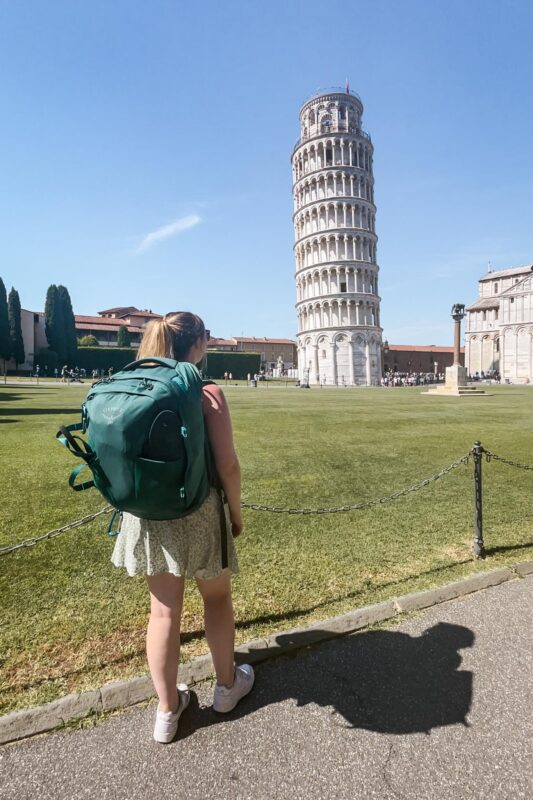
The total cost of backpacking Europe
And now, for the grand total of how much I spent while backpacking Europe.
Drum roll please…
I spent a total of €8,336 over the course of 114 days in Europe which equals to an average of €73 per day.
Now, if you are planning your own Europe trip, please take this as a rough guide as there are many circumstances that may lead to that price being higher or lower.
For example, accommodation types, certain countries, activities, eating habits and backpacking style.
I have broken down below the total spend of each country to give you an ever-deeper understanding of my spending.
| Country | Total of ‘Other’ Expenses |
|---|---|
| Croatia | €1,231 (€56 per day) |
| Italy | €2327.07 (€86 per day) |
| Poland | €712.40 (€59 per day) |
| Czechia | €311.97 (€62 per day) |
| Hungary | €258 (€52 per day) |
| Slovenia | €829 (€100 per day) |
| Austria | €1,330.73 (€95 per day) |
| Germany | €135.79 (€45 per day) |
| Switzerland | €326.68 (€108 per day) |
| France | €822.07 (€91 per day) |
| Total Days | Other Total Spend |
| 114 | €8,336 (€73 per day) |
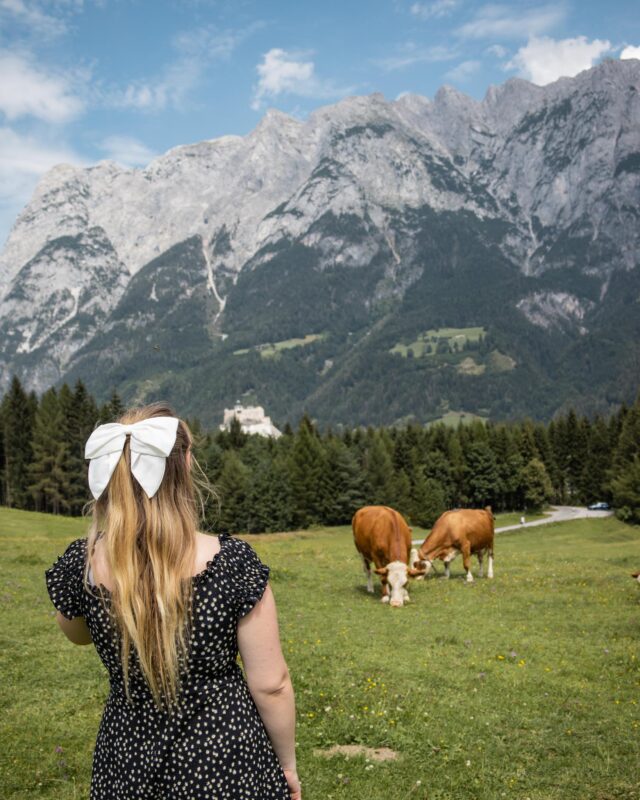
Tips on how to travel Europe on a Budget
1. Bring a reusable bottle:
This may seem like a simple concept, but not only is it environmentally friendly you will also save yourself €1 to €4 every time you need a drink. Most major European cities have free and safe drinking water. I recommend this reusable bottle. I love that it has a clip so I can add it to the outside of my bag.
2. Do NOT withdraw cash from just any bank machines
In Europe, there are ATM machines EVERYWHERE. Every time you turn a corner there are at least 3 machines BUT… these machines tend to have the largest withdrawn fees. I recommend finding an ATM that is attached to a bank as it will be a lot more affordable to withdraw money.
3. Walk as much as possible!
Avoid taking busses, taxis and paid modes of transport. A lot of European cities are walkable and while a simple bus journey may only cost a couple of euros. Using them repeatedly can really add up. Walking will save you some extra cash and you may come across a hidden gem or two as you stroll.
4. SIM Cards
If you are visiting from outside the EU, odds are you will need to purchase a sim card. I was lucky, as my phone works as normal in most European countries. However, I made friends with fellow backpackers who were stung by high prices when purchasing sim cards and phone plans from shops in train stations and airports. My advice would be to purchase an eSim before you go!
📞 Want to stay connected when travelling? Then I recommend checking out Airalo, a eSim company that offers affordable data plans in 200+ countries. They also have a Europe plan that covers over 39 European countries. Perfect for Backpacking! You can check out their deals here.
5. Travel in the off-season
It can be tempting to plan your trip in the summer months but the reality is this is when Europe is at it’s most expensive. Considering travelling the shoulder season between March-May or September – October. You will still have mild to warm temperatures in most countries but accommodation and activities will be a fraction of the price.
6. Plan your route ahead of time
Plan your Europe Route before starting your trip, I don’t mean you need to prebook everything but have an idea of where you want to go. This way you will avoid travelling back and forward and ultimately spending more money on transportation than needed.
So, for example, say you plan to visit Budapest, have a look to see what other destinations are near by before jumping to say Lisbon which is on the otherside of the continent.
7. Eastern VS Western Europe
Eastern Europe is considerably more affordable than Western Europe. So, if you are trying to have your money go as far as possible try to stay out of the West. The Balkans is also a budget-friendly spot to travel around and is completely underrated. You will pay a fraction of the price in the likes of Poland, Slovenia and Croatia, compared to the likes of Lisbon, Rome or Dublin.
8. Make friends to share the budget with
If you plan on staying in hostels you will find it easy to make friends with fellow travellers. Odds are one of them will want to take part in the same activities whether that is renting a boat, going on a day tour or taking part in an experience. Generally, there a group discounts, its best to take advantage of this as much as possible.
9. Shop around for you flights
Ok, so I didn’t actually include the price of my flight in this final cost breakdown because this expense will vary from person to person depending from where you are travelling from. For example, some may be starting from a country in mainland Europe, therefore, no flights would be needed.
Where as me, I travelled from Dublin, which tends to be rather expensive compared to other European destinations.
Then you have backpacker coming from different continents, they will need to factor in the cost of flights as they will be considerable more.
| Related Post: Epic airport captions for your Insta pics |
10. Don’t skip out on the hidden gems
Ok, so it can be easy to want to visit some of Europe’s top travel destinations while backpacking but do not sleep on the off the beaten path locations. Like Hallstatt in Austria or Lauterbrunnen in Switzerland.
This also applys to cities, like did you know that one of Rome’s top hidden gems in a pyramid, or that Budapest has a underground cave system that you can take an adrenaline tour through?
And yes some of these experiences cost money but I highly recommend keeping some cash aside for them as they will leave you with a life time of memories.
11. Don’t let expenses get in the way of your saftey
It can be easy to decide to walk somewhere at night alone because it is the more cost effective way of getting there. However, even in safe cities such as Budapest or Rome, I would not advise doing so. Yes, hopping in an Uber may eat a little bit into your budget but it means you get to you hostel safetly.
